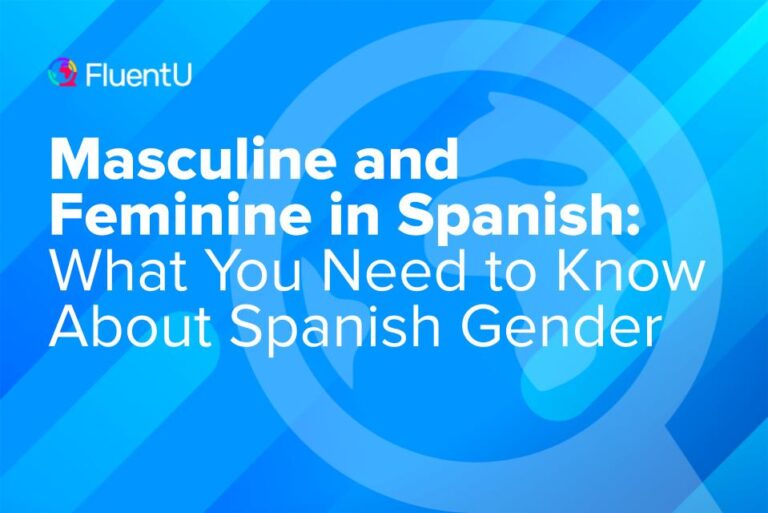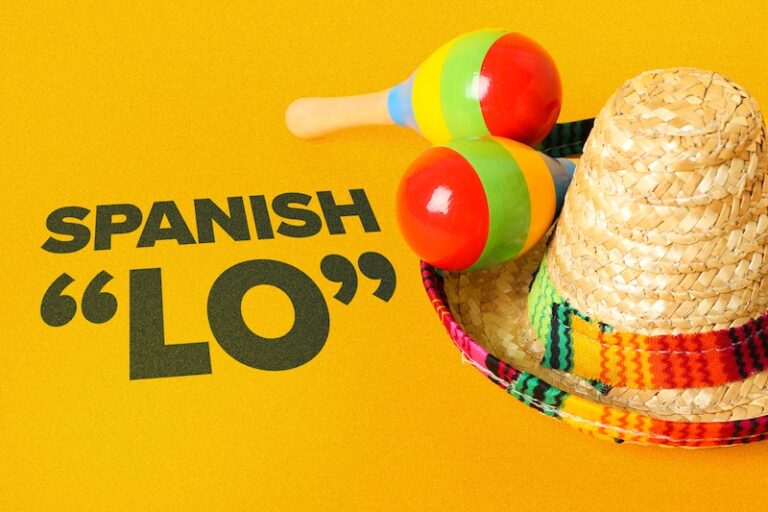Contents
- How Long Does It Take to Learn Spanish: The Short Answer
- How Long Does It Take to Reach a Certain Skill Level in Spanish?
- How Long Does It Take to Achieve Your Goals in Spanish?
- How Long Does It Take to Learn Spanish by Your Preferred Method?
- How Long Does It Take to Learn Spanish Based on Your Native Language?
- FAQ About Learning Spanish
How Long It Really Takes to Learn Spanish

The U.S. Foreign Service Institute estimates you can become fluent in Spanish after 600-750 learning hours. However, if you read the fine print on the FSI website (and the study they published in 1999), you’ll find the honest answer is a little more nuanced than that—this estimate is only for native English speakers who are “very good or better” at learning languages.
Your resources, experience, native language, goals and more can effect the time it takes to reach each level, and based on those you can get a better idea of how long it’s actually going to take YOU to learn Spanish.
Download: This blog post is available as a convenient and portable PDF that you can take anywhere. Click here to get a copy. (Download)
How Long Does It Take to Learn Spanish: The Short Answer
The answer is very nuanced, but to simplify things somewhat, it takes around 1000 hours to reach Spanish fluency.
So for native English speakers, this usually takes around 1.5-3 years.
To reach a conversational, upper-intermediate level (B2), you can expect to spend 540-620 hours learning (between 11 months and 3 years).
However, as we’re about to see, the answer is different from person to person! You need to take into account what level you want to reach, how you’re learning and what your current language knowledge is (among other things).
This table is a good summary of time estimates, and we’ll go into more detail on these levels in the next section.
| Level | User Level | Hours Required | Months Required |
|---|---|---|---|
| A1 | Basic | 70 - 80 | 2 - 3 |
| A2 | Basic | 150 - 180 | 4 - 7 |
| B1 | Independent | 300 - 360 | 7 - 13 |
| B2 | Independent | 540 - 620 | 11 - 24 |
| C1 | Proficient | 740 - 860 | 15 - 30 |
| C2 | Proficient | 920 - 1100 | 30 - 36 |
How Long Does It Take to Reach a Certain Skill Level in Spanish?
A1 level
Total number of hours: 70 – 80 (between two and three months total)
Best learning tool for this level: Free Spanish online resources
The A1 level covers very basic grammar and vocabulary topics. It’s meant to just be a foundation upon which you’ll build the rest of your Spanish knowledge.
Between 70 and 80 hours of study should be enough to reach the A1 level of the Common European Framework of Reference for Languages (CEFR).
Depending on the learning method you choose and the intensity of your studying, this should take you no more than two to three months.
A2 level
Total number of hours from A1: 150 – 180 (between four and seven months total)
Best learning tool for this level: Spanish textbooks
Reaching the A2 level means you’ll be able to understand and produce basic Spanish sentences in simple, everyday situations.
To reach this level, you’ll need between 80 and 100 additional hours of study after achieving the A1 level. Depending on your learning method, this could take you between two (intensive pace) and four (normal pace) months.
B1 level
Total number of hours from A1: 300 – 360 (between seven and 13 months total)
Best learning tool for this level: Spanish language apps
The B1 level is where you actually start being conversational in Spanish.
This and the next level are going to take the longest to complete because they include the whole “meat” of your language-learning journey.
Starting from the A2 level, you’ll need approximately 150-180 study hours to reach B1.
If you’re following an intensive path, this amount of hours can easily be done in three months. At a normal pace (one hour of Spanish every day), six months should be enough.
B2 level
Total number of hours from A1: 540 – 620 (between 11 months and two years)
Best learning tool for this level: Spanish podcasts
Once you reach the B2 level, you’ll be able to have casual conversations with native Spanish speakers without too much difficulty.
However, you may also feel like your learning curve is slowing down and you’re getting stuck.
This is a common situation when learning languages, and it even has a name: the intermediate plateau.
The B2 level will require you to study for about 240-260 additional hours after you’ve reached B1, so it’s going to take a while before you master it.
If you’re learning intensively, you’ll need around four months to cover everything. However, if you’re learning at a normal pace, you’re going to spend between eight and 10 months in this stage.
C1 level
Total number of hours from A1: 740 – 860 (between 15 months and 2.5 years)
Best learning tool for this level: Native-level content, like the videos available on FluentU
Paradoxically, once you reach the C1 level, things start getting easier again!
At this point, you’ll be completely conversational in Spanish and will be able to communicate comfortably in almost every situation.
After you’ve reached B2, getting to the C1 level requires you to study around 200-240 additional hours, but you may be able to do this faster or slower depending on your learning method.
If you’re following a very intensive path, you’ll need approximately four months. If your learning pace is slower (one hour a day), seven months should be more than enough.
C2 level
Total number of hours from A1: 920 – 1100 (between 1.5 and three years)
Best learning tool for this level: Native-level content
The C2 level is the last in the CEFR scale.
Once you complete it, you’ll finally be able to say that you’re fluent in Spanish!
But before that, you’ll need to reach the C1 level and add 180-240 additional hours of study on top of that, which should take around three to six months.
How Long Does It Take to Achieve Your Goals in Spanish?
To pass an official exam
Time estimate: 1 month – 3 years (depending on the level)
The time you’ll need to study to pass an official exam like the DELE exam will depend on the level of the exam. You can find time estimates for the different CEFR proficiency levels in the previous section.
To be conversational
Time estimate: 11 months – 2 years
You’ll start being conversational in Spanish somewhere between the A2 and the B1 levels, for which you’ll need between four months and one year of study.
If you want to be comfortable in any kind of situation, you’ll need to reach the B2 level at the very least.
To be truly fluent
Time estimate: 1.5 – 3 years
To become fluent in Spanish, you need to reach the C2 level, which will take you between 1.5 and three years.
To chat with native Spanish speakers
Time estimate: 4 – 7 months
You don’t need perfect Spanish to talk to people, so you can start doing it as soon as you feel ready.
I recommend you aim to reach at least the A2 level (from four to seven months of learning) so you can engage more actively in conversations.
To find a new job
Time estimate: 11 months – 2 years
You’ll need a decently proficient level of Spanish to find a good job that requires the language.
If I were you, I’d aim for at least the B2 level (between 11 months to two years of study).
To travel to a Spanish-speaking country
Time estimate: 1 – 3 months
You’ll only need some rudimentary Spanish to survive during your holidays in a Spanish-speaking country.
An A1 level should be enough (around two to three months of learning if you really want to cover all the basics).
How Long Does It Take to Learn Spanish by Your Preferred Method?
Learning by yourself
Time estimate: ~1.5 years
With the right resources, this can be a rather fast learning method.
If everything goes according to plan, you can study Spanish on your own and reach fluency in around 1.5 years.
Attending a traditional course
Time estimate: 3 – 4 years
Just speaking personally, traditional Spanish courses are my least favorite learning method because you have to follow a specific curriculum, which has normally been created to make the courses last as long as possible.
If you prefer this way of learning, you’ll need at least three to four years to reach fluency.
Learning with a tutor
Time estimate: ~1 year
Learning with a tutor is one of the best ways to learn quickly and efficiently while having a specific goal in mind (like wanting to find a job abroad).
If you’re meeting with your tutor three times a week, one year should be enough to reach the C1 level.
Learning with a language partner
Time estimate: ~6 months
This method is very effective if you can find a native language partner, but it can be quite messy without a well-planned curriculum.
If you choose this learning method, you’re probably just aiming to be conversational. Six months should be enough to get you to that point.
Immersion at home
Time estimate: ~1.5 years
Spanish immersion is one of the best methods to reach fluency.
Practicing immersion at home might not be as fast as actually going abroad. Yet if you truly commit to immersing yourself in Spanish, you’ll be able to reach fluency in around 1.5 years.
Immersion in a Spanish-speaking country
Time estimate: 9 – 12 months
If this were a contest, the winning learning method would be immersion in a Spanish-speaking country.
As you can imagine, this is usually the most expensive way to learn a language. But if you’re able to go for this method (and put effort into it!), nine months to a year can be enough to reach fluency.
How Long Does It Take to Learn Spanish Based on Your Native Language?
For native speakers of a Germanic language
Time estimate: 18 – 24 months
If you speak a Germanic language (like English, Dutch or German), you’ll learn at a “normal” pace as far as the FSI estimates are concerned.
This means you’ll possibly have some difficulties with topics such as Spanish conjugation and the Spanish subjunctive. But, overall, learning Spanish shouldn’t be an impossible task for you and should be doable in 18-24 months.
For native speakers of a Romance language
Time estimate: 9 – 12 months
If your native language is a Romance language (like French, Italian or Portuguese), then you’re in luck! Spanish is a Romance language itself, so a lot of the vocabulary and grammar you learn will probably look very familiar to you.
Learning Spanish will take you half the amount of hours an English speaker would need. If you study hard, you could easily reach fluency in nine to 12 months.
For native speakers of a Slavic language
Time estimate: 2 – 4 years
Slavic languages include Russian, Polish and Croatian. I’ve been teaching Spanish to Polish students for over a decade, and in general, they put Spanish on the easy-to-learn list.
My Polish students tend to need from two to four years to reach fluency, but the learners who come to my one-on-one classes reach the C2 level (fluency) in around 1.5 years.
For native speakers of Asian, African and other language families
Time estimate: ~3 years
I’ve asked 14 of my friends who speak Asian and African languages (including nine who are completely fluent in Spanish) for their opinion about learning the Spanish language.
The consensus is that, even if your native language has a totally different writing system from Spanish (like Arabic, Japanese or Chinese do), Spanish is actually an easy language to learn compared to, say, English.
For example, Spanish pronunciation is pretty straightforward (vowel sounds are super predictable).
In particular, Arabic speakers should have an advantage in learning Spanish. Arabic had a huge influence on the development of early Spanish during the 800-year period of the Middle Ages when the Moors occupied Spain. So Arabic and Spanish still have a lot of very similar vocabulary!
My friends who speak Asian and African languages have spent an average of three years to reach fluency, with Spanish conjugation being the winner of the “Most Difficult Topic” award.
FAQ About Learning Spanish
How long does it take to learn basic Spanish?
If you want to learn enough Spanish to have basic, beginner-level conversations, it should take around 150-180 (between four and seven months total). This will get you to an A2 level.
However, if you just want to know enough to be able to travel, around two to three months is enough to reach A1.
How long does it take the average person to learn Spanish?
Since it takes 540-620 hours to reach a B2 conversational level, it should take the average person between 11 months and two years.
Can you learn Spanish in 3 months?
In 3 months, you can realistically achieve an A1-A2 level. But with several hours of studying a day, it could be possible to achieve B1.
Check out this post for an idea of how you can learn Spanish within 3 months.
Can I become fluent in Spanish in a year?
Yes, you can become fluent in Spanish in a year if you’re good at languages and dedicate many hours of studying per day. However, fluency usually requires at least 1.5 years, if not 2-3 years.
As you can see, it is possible to answer the eternal question of how long it takes to learn Spanish!
Of course, the amount of time you need to become fluent can vary significantly. It all depends on your learning method and pace.
But these estimates should help keep you on track as you rack up those learning hours and advance your skills.
Now that you have the answers you need, all you have to do now is take the first step of your journey!
Stay curious, my friends. And as always, happy learning!








